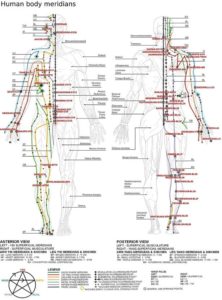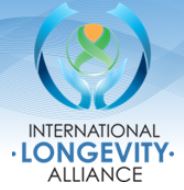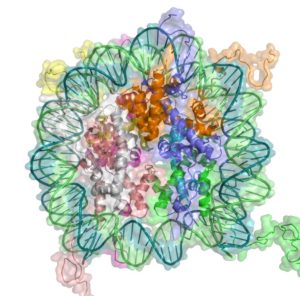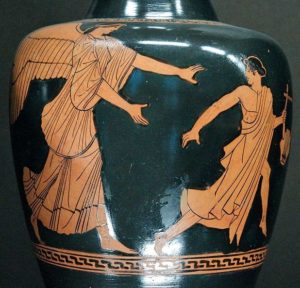My mother died of lung cancer, apparently because she smoked. Her risks increased fivefold with smoking. It’s terrible, this fivefold increase, of course, it’s potentially fatal. But from the age of 20 to 70 your chances of getting cancer are multiplied by a thousand and we are not talking about aging. David Sinclair, Australian biologist. Cracking and reversing the aging Clock. 2019, June 2019.
Theme of the month : Ethics committees, a brake on the right to health and advances for rejuvenation?
 We live in an extraordinarily complex administrative and political environment, particularly with regard to decision-making processes. As a result, in the field of health, in the world, there are tens of thousands of public institutions with authority at one level or another. Of these, medical ethics committees that give their approval in relation to human experimentation are not among the best known.
We live in an extraordinarily complex administrative and political environment, particularly with regard to decision-making processes. As a result, in the field of health, in the world, there are tens of thousands of public institutions with authority at one level or another. Of these, medical ethics committees that give their approval in relation to human experimentation are not among the best known.
Let us take the case of political and social security decisions in the field of health in three wealthy countries: France, Belgium and the United States. The averagely well-informed citizen knows that decisions on drug approvals depend on certain authorities (the FDA – the US Food and Drug Administration – being certainly the best known) and that the most important decisions are decided in parliaments and prepared by ministers. If he or she is Belgian and well-informed, they will know that in this small country there are 9 ministers with responsibilities for health matters, numerous mutual (‘friendly’) societies, a directorate for each public hospital (sometimes several hospitals are grouped together), doctors’ organizations and multiple advisory committees. If they live in France, they will most likely have come across the Caisse primaire d’assurance maladie, the Ministry of Health, hospital directorates etc.
But does a citizen, even an informed one, know that for almost every medical trial, which could one day save him, hundreds of organizations are able to prevent research (but not to require research to be done)?
The institutions vary greatly from country to country. The biggest are in the United States. They are known by the abbreviation IRB for Institutional Review Board. In France, there are Committees for the Protection of Persons, in Belgium Medical Ethics Committees. In Belgium alone, there are 144 active committees!
If these institutions are little known this is partly because organizations carrying out medical trials rarely express fears of slowness or blockages. Firstly, because it would send a signal to the public and potential investors that lengthy administrative procedures are still needed before products can be placed on the market. Secondly, because stakeholders almost always feel that the choice of discretion rather than media coverage in relation to difficulties in these areas gives a better chance of success. Moreover, while an appeal is theoretically possible in the event that a trial is refused by an ethics committee, such an appeal will almost never occur.
To avoid the blocking effect of the committees, some people are tempted to experiment in countries with much less restrictive legislation. This does not usually give good results because organizing an experiment in an “exotic” part of the world:
- presents many difficulties (insufficient medical infrastructure, risk of corruption or fraud and of course the need to work remotely or to travel);
- could be bad publicity for those organizing the trial because they could be accused of not respecting the ethical rules;
- Most importantly, the results of the trial would be difficult to publish; even if the results were potentially useful, they would therefore be poorly or not at all publicized and the available therapy could not be made available.
Finally, it should be noted that ethics committees also exist in countries often reputed to be little attentive or even indifferent to these issues, such as Russia or China.
Let’s imagine that today an ethics committee is asked to give an opinion on a potential human journey to the moon, not for reasons of prestige, but for medical reasons, for example by sending identical twins (monozygotic) to a space base (some remaining on earth, others leaving to measure the effects of reduced gravity, cosmic radiation, life in a confined space, etc.). No ethics committee would accept this experiment, which would nevertheless be a considerable source of useful information. And this would be so even if there are informed and aware people willing to risk their lives and/or who are suffering from diseases that are incurable and are fatal in the near term and who would therefore be happy to be able to devote their last days to being useful.
In French-speaking countries, an ethics committee appears at first glance to only give opinions but not to decide. This is because the ‘opinions’ (avis) of a committee can be of two kinds. In legal terms, this will be described as avis conforme or an avis simple. The latter is a real opinion that the one who decides is free to follow. The former however is best translated in English as ‘assent’ and is in fact an authorization procedure. And for the vast majority of ethics committees, what is required is assent.
The multitude of competent bodies depending on the place where trials are carried out is a strange arrangement. Human rights are generally regarded as universal and scientific research should cross borders, especially a country’s internal borders. Why would a trial for longevity be ethical in a Parisian hospital and not in a hospital in Lyon? It should also be noted that the fact that these committees are often small and therefore directly linked to an institution also implies the risk that an advisory committee is not concerned with the public interest or the interest of patients, but first and foremost with the interest of the institution in which the committee is located; or that the committee is not very attentive.
Above all, ethics committees only have the power to block, not to trigger or to encourage. While research that is triggered too quickly can cause injury or even death to people who have accepted the trials, delayed or abandoned research can prevent the survival of millions, or even billions, of people. If vaccine experiments, for example against polio, had been prevented, millions of people would have died in often excruciating suffering.
In a world more concerned with the collective interest, ethics committees would therefore be competent first and foremost, not to hinder medical progress, but to request useful medical trials. A change of perspective on this subject is not simple, but it is possible.
Good news of the month : A positive interview with George Church and a great French-language video in favor of longevity
The famous American scientist George Church gave a detailed and optimistic interview about longevity research: The goal of a Harvard geneticist: to protect humans from viruses, genetic diseases and aging. (With respect to the time horizon of age reversal in humans,) it is in clinical trials in dogs right now. So this veterinary product could be available in a few years, and then it will take another ten years for human clinical trials to be completed.
The ‘Zetetician’ (a person who casts doubt on and verifies unusual scientific claims) Samuel Buisseret has made a long video about how the search for immortality (more precisely life without aging) is a conceivable and desirable goal. He proposes in particular to envisage a better future, to dare to dream that “in 2100 we will all, including you and I, live as masters of our longevity in a world that will have been able to adapt and enrich itself with the consequences of its mistakes (…). There is nothing irrational about imagining such a world today.”
To find out more :
- See in particular: heales.org, sens.org, longevityalliance.org and longecity.org






 According to
According to 









